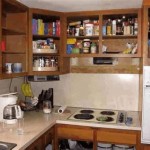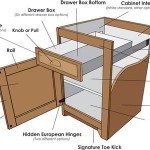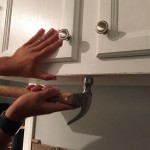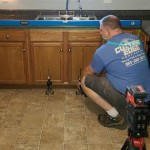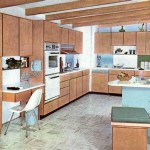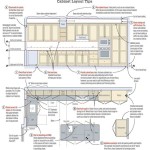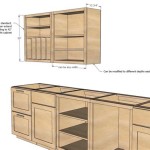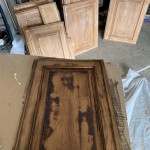Painting Kitchen Cabinets With Farrow & Ball Paint
Farrow & Ball paint is a popular choice for kitchen cabinets due to its rich pigments, depth of color, and durable finish. This premium paint offers an elevated aesthetic, but using it on kitchen cabinets requires careful preparation and application to achieve professional-looking results. This article outlines the steps and considerations involved in painting kitchen cabinets with Farrow & Ball paint.
Choosing the Right Farrow & Ball Paint for Kitchen Cabinets: Farrow & Ball offers a wide range of finishes, but for kitchen cabinets, Estate Eggshell or Modern Eggshell are recommended. These finishes offer good durability and scrubbability, essential for withstanding the wear and tear of a busy kitchen environment. Full Gloss is another option for a high-shine, traditional look, though it will highlight any imperfections in the cabinet surface. Avoid using softer finishes like Estate Emulsion or Modern Emulsion, as they are not designed for the rigors of kitchen use.
Color Selection: Farrow & Ball's curated color palette provides a diverse array of options, from muted neutrals to bold, saturated hues. Consider the overall kitchen design, lighting, and existing color scheme when choosing a cabinet color. Testing the chosen color on a sample board or a less visible area of the cabinets is highly recommended to ensure it appears as desired in the specific kitchen environment.
Preparing the Cabinets for Painting: Thorough preparation is crucial for a smooth, professional finish. Start by removing all cabinet hardware, including knobs, pulls, hinges, and any other attached elements. Label the hardware and store it safely for reattachment later.
Cleaning and Degreasing: Kitchen cabinets accumulate grease and grime over time. Clean them thoroughly using a strong degreaser specifically designed for kitchen surfaces. Sugar soap is also a suitable option. Ensure the cabinets are completely rinsed and dried after cleaning.
Sanding: Sanding creates a slightly rough surface, which provides better adhesion for the primer and paint. Use a fine-grit sandpaper (180-220 grit) to lightly sand all surfaces to be painted. Avoid over-sanding, which can damage the cabinet material. After sanding, wipe away all dust with a tack cloth.
Filling and Repairing: Inspect the cabinets for any imperfections, such as dents, scratches, or chips. Fill these areas with a suitable wood filler and allow it to dry completely according to the manufacturer's instructions. Once dry, sand the filled areas smooth and level with the surrounding surface.
Priming: Applying a primer is essential, especially when painting over previously painted surfaces or when using lighter Farrow & Ball colors. A good quality primer provides a uniform base for the paint, improving adhesion and color consistency. Use a primer that is compatible with both the cabinet material and the Farrow & Ball paint.
Applying the Farrow & Ball Paint: Farrow & Ball paint can be applied with a brush or roller. For a smooth, even finish, a high-quality brush designed for eggshell or gloss finishes is recommended. Apply the paint in thin, even coats, following the wood grain. Avoid overloading the brush or roller, as this can lead to drips and runs. Allow each coat to dry thoroughly before applying the next.
Number of Coats: Typically, two to three coats of Farrow & Ball paint are required to achieve full color saturation and coverage. The number of coats may vary depending on the chosen color and the existing cabinet color. Allow adequate drying time between coats, as specified by the paint manufacturer.
Reattaching Hardware: Once the final coat of paint has dried completely and cured, reattach the cabinet hardware. Use the labels created earlier to ensure the hardware is returned to its original location.
Protecting the Finish: While Farrow & Ball Estate Eggshell and Modern Eggshell finishes offer good durability, it's still beneficial to avoid abrasive cleaners and harsh scrubbing. Clean the cabinets with a soft cloth and a mild cleaning solution. Consider using cabinet liners to protect the interior surfaces from spills and scratches.
Ventilation: Ensure adequate ventilation throughout the painting process. Open windows and doors to allow fresh air to circulate and help the paint dry properly. Consider using a respirator mask to avoid inhaling paint fumes.
Disposal: Dispose of paint and cleaning materials responsibly according to local regulations. Do not pour paint down the drain. Clean brushes and rollers thoroughly with the appropriate solvent.

Painting Kitchen Cabinets Farrow Ball

Painting Kitchen Cabinets Farrow Ball

Painting Kitchen Cabinets Farrow Ball

Painting Kitchen Cabinets Farrow Ball

Painting Kitchen Cabinets Farrow Ball

Kitchen Paint Inspiration Farrow Ball

Painting Kitchen Cabinets Farrow Ball

Modern Country Style Farrow And Ball Kitchen Cabinet Colours

Painting Kitchen Cabinets Farrow Ball
Modern Country Style Farrow And Ball Kitchen Cabinet Colours
Related Posts

